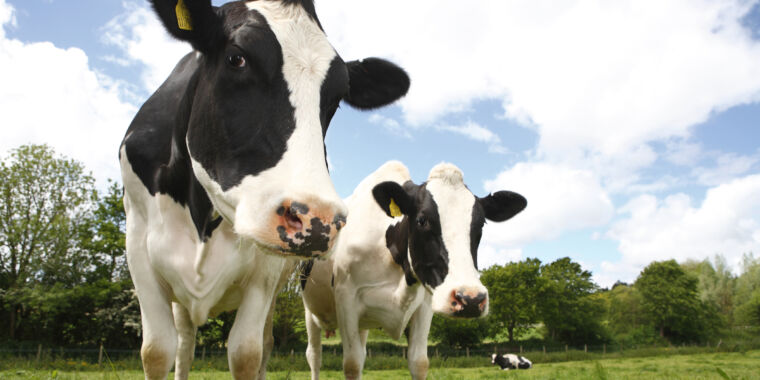Spread of Deadly Bird Flu to Dairy Cows
State and federal officials have recently announced that a highly pathogenic strain of avian influenza (HPAI) has been transmitted to dairy cows in Texas and Kansas by wild migratory birds. This occurrence marks the first time that such a virus has been identified in cows within the United States. Notably, a case of HPAI was also confirmed in a young goat in Minnesota last week, signifying the virus’s first appearance in a domestic ruminant in the country.
H5N1 Strain Transmission
Authorities from the Texas Animal Health Commission have determined that the particular flu virus affecting the cows belongs to the Type A H5N1 strain, which has been causing widespread devastation among bird populations worldwide for several years. Due to the rapid and constant spread of the virus, there have been numerous instances of transmission to mammalian species, prompting concerns among epidemiologists regarding the potential adaptation of the virus for human-to-human transmission.
Risk to Public Health
Despite the concerning nature of the situation, the risk posed to the general public is currently deemed to be low. Genetic testing conducted by the National Veterinary Services Laboratories under the US Department of Agriculture (USDA) has indicated that the H5N1 strain present in the infected cows lacks mutations that would enhance transmissibility to humans. All milk generated by the affected animals, albeit revealing traces of the flu strain, is being disposed of as a precautionary measure. Dairy farms are strictly required to ensure that only milk from healthy animals enters the human consumption supply chain. Moreover, the standard pasteurization process eliminates viruses such as influenza and bacteria, further minimizing risks to consumers.
Impact on Cattle Population
Current reports suggest that the virus primarily affects older cows. Detected in milk samples from ill cows at two Kansas farms and one Texas farm, as well as in a throat swab from a cow on a second Texas farm, the virus has also been linked to deceased birds on the premises and sick cows in New Mexico. Clinical signs of the bird flu in cows encompass reduced milk production and decreased appetite. Nonetheless, the USDA believes that the spread of H5N1 is unlikely to significantly impede milk production or pose a substantial threat to the overall health of cattle herds. Only a small portion of affected herds—approximately 10%—have exhibited signs of infection, with minimal associated mortality rates. The USDA remains vigilant in monitoring the situation, acknowledging the fast-evolving nature of the infections.
Consumer Assurance and Future Outlook
Emphasizing consumer safety, Texas Agriculture Commissioner Sid Miller has reassured the public that there is no imminent threat nor any impending disruptions in milk supplies. No contaminated milk has reportedly entered the food chain as all affected products have been discarded. In the event that contaminated milk does surface in the supply chain, the pasteurization process stands as a robust safeguard, capable of neutralizing the virus effectively.
Image/Photo credit: source url





